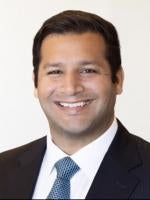Tomorrow morning (Friday, January 7), the Supreme Court hears oral argument in the OSHA (10 a.m. EST) and CMS (11 a.m. EST) mandate cases. (You can listen to the arguments live here.) For the OSHA mandate, one group of petitioners consists of a coalition of twenty-seven States, led by Ohio, and the other consists of a coalition of business associations. We’ve read the briefs, and here are our issues to look out for tomorrow:
Whether OSHA may only regulate occupational dangers. The petitioners argue that because the OSH Act and OSHA regulations are all concerned with occupational hazards, OSHA cannot regulate against a virus presenting a risk to all Americans. Meanwhile, OSHA argues that the OSH Act is not limited to dangers that are workplace-specific, especially given Congress’ previous endorsement of OSHA’s measures to encourage vaccination against bloodborne pathogens.
Whether COVID-19 is a “grave danger” that represents a “new hazard.” The States argue that the OSH ACT limits “grave danger” to those “from exposure to substances are agents determined to be toxic or physically harmful,” connoting toxicity and poisonousness. Thus, it cannot refer to airborne viruses that are “both widely present in society” and “non-life-threatening to a vast majority of employees.” OSHA argues that the statute’s disjunctive phrasing allows for an ETS targeting viruses that are physically harmful, or a “new hazard, even if not technically “toxic” in nature.
Whether there is an “emergency” to justify the ETS. The petitioners continue to argue that nothing significant has changed over the past year the country had been living with the virus to justify finding an emergency. OSHA responds by pointing to problems presented by the return to work, the Delta variant, and COVID fatigue.
Whether the ETS is “necessary.” The States argue that the OSH Act imposes a higher standard: while other regulations may be merely “reasonably necessary or appropriate,” the Act requires emergency regulations to be “necessary”—which the States read as essential or indispensable. According to the States, the delay between the issuance of the ETS and the time it was supposed to go into effect dooms any argument that it is necessary. The business associations, for their part, stress that OSHA could have gone through notice and comment proceedings months ago. In OSHA’s view, the statute is not nearly so narrow and it is enough that workplaces contribute substantially to the spread of the virus and that vaccines are the best way to fight COVID-19.
The scope of relief. The petitioners obviously want to stay the entire mandate—both the vaccine and masking/testing requirements. OSHA argues that any stay should be limited to the vaccine requirement.
Major-questions doctrine and federalism canon. The petitioners argue that these canons of construction require Congress to speak clearly when delegating major economic and political questions to agencies that alter the balance between federal and state governments. OSHA argues that neither of these canons apply and, in any event, Congress did speak clearly, as evidenced by the fact that it recently allocated $100 million to OSHA to carry out COVID-19 related worker protection activities.
Facts outside the administrative record. While the OSHA and CMS mandates are supposed to be judged according to the record — which makes much of the factual discussion seem a little dated in this fast-moving pandemic — we’ll be interested to see whether the Omicron variant, the recent spike in cases, and other relatively recent developments show up at oral argument.
And, maybe, a few Constitutional issues. While constitutional issues like the Commerce Clause and Non-Delegation Doctrine might appear tomorrow, we expect the statutory arguments to dominate the discussion—exactly as they did in the parties’ Supreme Court and Sixth Circuit briefing and in most Sixth Circuit opinions.
We’ll be interested to see how the opinions of Judge Stranch, Judge Larsen, Judge Sutton, and Judge Bush influence the Justices’ approach to the legal and factual questions.





 />i
/>i

